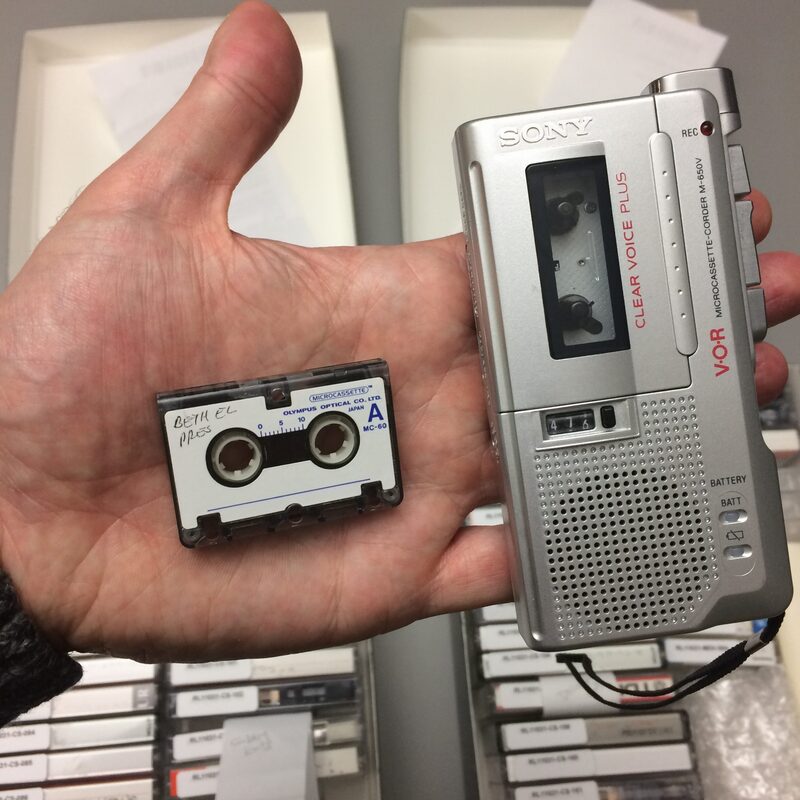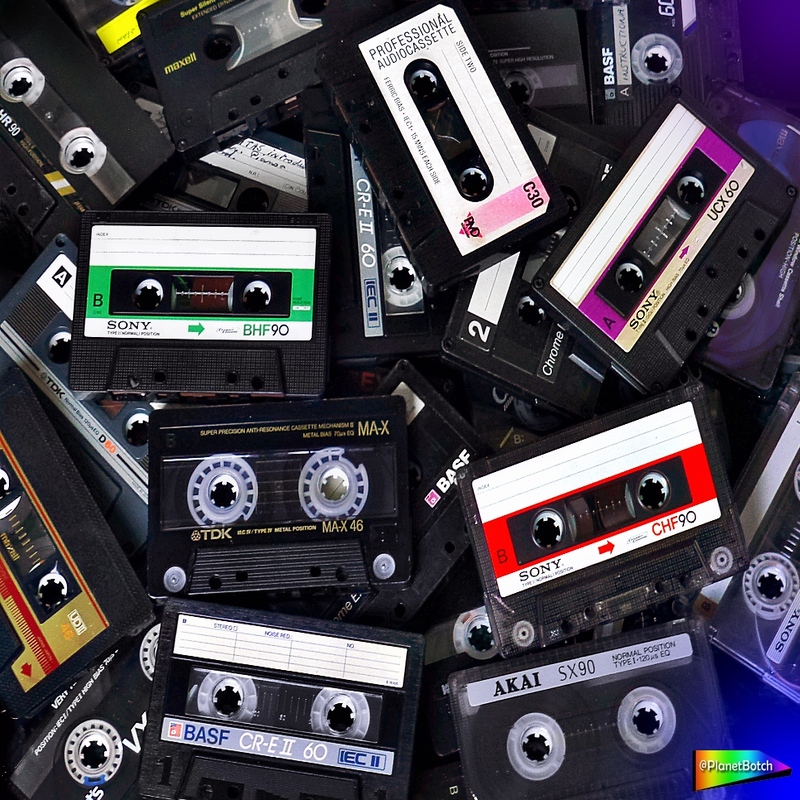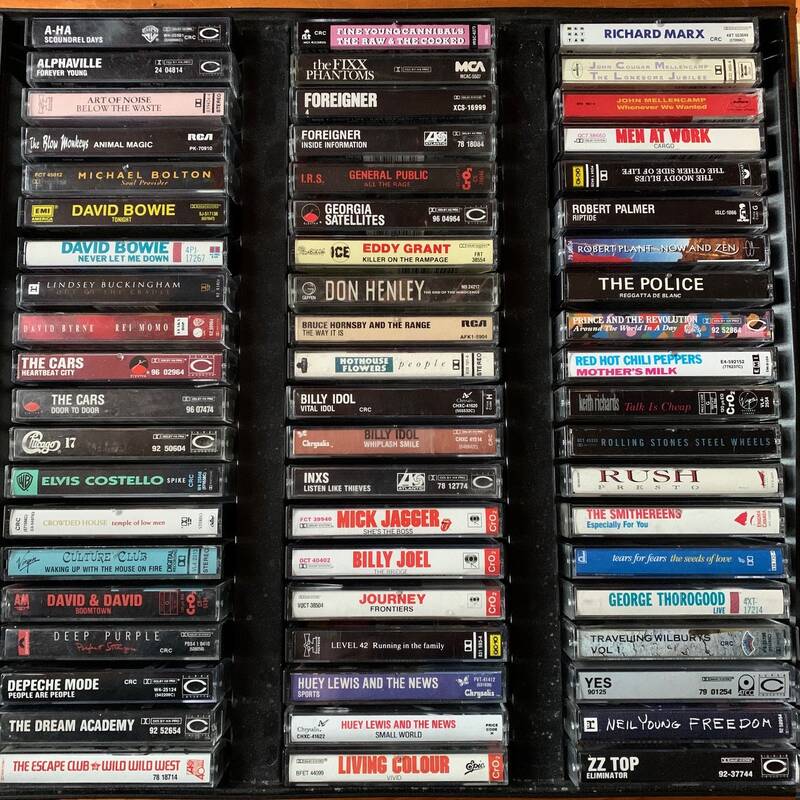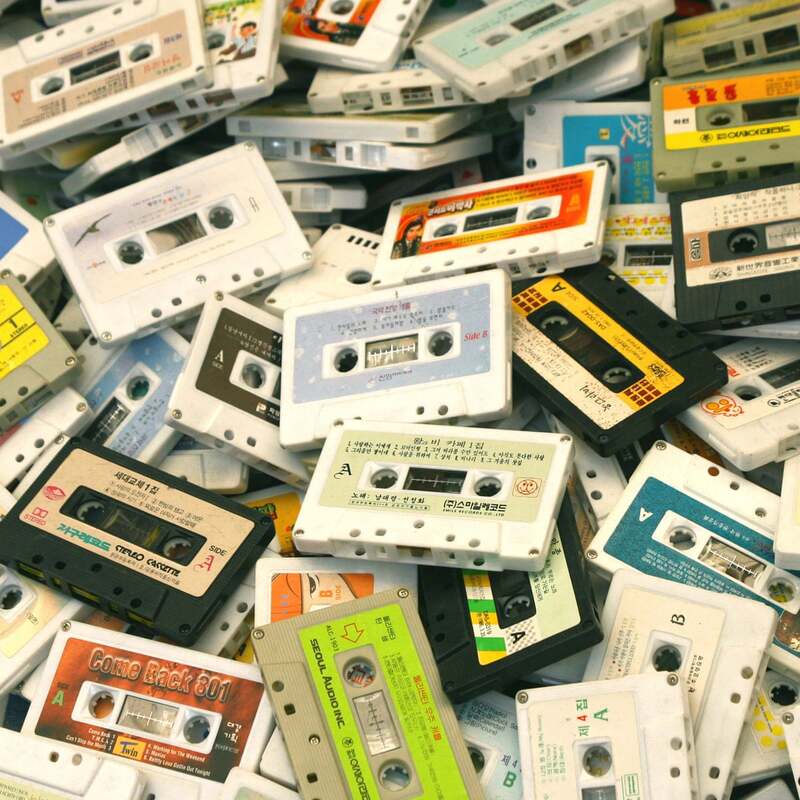Cassettes, once a staple of music consumption, have experienced a significant resurgence in recent years. While digital music dominates today’s landscape, the clunky charm of cassette tapes holds a unique allure. Many people find consolation in their physicality and artfulness. Consequently, cassettes have become cherished collectibles, rather than mere relics of a bygone era. This article delves into the world of cassettes, exploring their history, revival, and cultural significance.
A Brief History of Cassettes
The Birth of the Cassette
Cassettes were first introduced in the 1960s. Philips pioneered this innovative tape format in 1963. The initial purpose was to allow home recording. Consequently, music lovers could create personalized playlists. This format quickly gained popularity due to its convenience. Unlike vinyl records, which were bulky, cassettes were compact and portable. Most people could easily carry them anywhere they went. They quickly became a staple in cars, homes, and portable players.
The Cassette Boom
During the 1970s and 1980s, cassettes experienced tremendous growth. They became the primary medium for music distribution. Record labels began releasing albums on cassette. As a result, artists found new ways to reach audiences. Moreover, the boom of the mixtape emerged during this era. People began recording songs from the radio or their vinyl collections. Sharing mixtapes became a form of personalized communication. As a result, cassettes became more than just music; they represented relationships and memories.
The Decline and Resurgence
By the late 1990s, cassettes faced fierce competition. CDs offered better sound quality. Additionally, digital downloads emerged as a new way to enjoy music. Consequently, many believed the cassette would soon disappear. However, in recent years, there has been a surprising revival. Young people are increasingly drawn to the physical format. The tactile experience of handling a cassette attracts audiophiles. Furthermore, collectors appreciate the unique design and packaging options. The nostalgia factor also plays a significant role in the rebound.

The Resurgence of Cassettes
A Space for Nostalgia
In recent years, the once-dormant cassette market has experienced a surprising revival. Many music enthusiasts cherish the nostalgic feel of cassette tapes. Their tangible nature provides a unique connection to the music. As a result, collectors often seek out rare and limited editions. This longing for nostalgia is not merely sentimental; it connects listeners to their past.
The Influence of Indie Music
Emerging indie bands have also embraced cassette’s retro charm. By producing albums on cassette, they distinguish themselves from digital releases. This choice speaks volumes to their niche audiences. Moreover, tapes often come with handcrafted packaging. This artisanal quality enhances the listening experience. Fans appreciate the authenticity that cassettes convey. Also, supporting smaller, independent artists becomes increasingly trendy.
The Modern Cassette Scene
Indie Artists and Cassette Releases
The cassette resurgence is largely driven by indie artists and small labels. Today, many emerging musicians appreciate the format’s affordability. Additionally, cassettes allow artists to create physical connections with fans. Producing music on cassettes offers a unique selling proposition in a saturated market.
Moreover, artists often enjoy the tactile aspect of cassette creation. Designing covers and crafting inlays allows for artistic expression beyond the music itself. This involvement fosters a sense of community among creators and listeners. For example, various indie labels are dedicated to releasing limited-edition cassettes.
This activity demonstrates how the cassette trend is breathing new life into smaller music scenes. It also provides an alternative to the mainstream music industry. More indie artists are turning to cassettes as a part of their branding. Limited runs can easily sell out, generating buzz and excitement among fans.
Consequently, the cassette medium has become a way to stand out. Furthermore, music festivals now frequently feature cassette vendors. These gatherings emphasize the growing importance of this format in today’s music landscape. The indie cassette scene demonstrates a refreshing return to tangible music experiences.
The Role of Collectors and Enthusiasts
Collecting cassettes has become a popular hobby among music lovers. Many fans cherish the slightly imperfect sound that analog offers. This nostalgia-filled experience evinces a sense of authenticity. Furthermore, retro aesthetics resonate deeply with collectors. The availability of vintage cassettes in thrift stores enhances this appeal.
Online marketplaces also contribute to the growing collector community. Enthusiasts eagerly scour platforms like eBay and Discogs for elusive finds. These exchanges create an international network of cassette fans. Many participate in social media groups or forums dedicated to cassette culture.
In addition, collectors often engage in discussions about favorite albums and rare releases. This dialogue helps to keep the format alive. Moreover, some enthusiasts document their collections through blogs or vlogs, sharing insights. These actions further embed cassettes into modern music culture.
As the community grows, exclusive cassette events have emerged. Cassette swap meets often see large turnouts. These gatherings foster connections among fans and provide opportunities to trade or buy. The growing interest in cassette culture reflects a broader societal trend toward analog experiences.
In conclusion, the cassette revival is fueled by collectors and enthusiasts. Their dedication to the medium keeps it vibrant and relevant. This grassroots movement reaffirms the enduring appeal of tape-based music.

Technical Details of Cassettes
Understanding How Cassettes Work
Cassettes consist of magnetic tape enclosed in a plastic shell. This design allows sound to be recorded and played back. A recording head magnetizes the tape as the cassette runs. Sound waves are translated into magnetic signals. When played back, the tape moves past a playback head. The head then translates the magnetic signals back into sound. Unlike digital formats, cassettes have a distinct warmth in their sound. Many enthusiasts appreciate this analog charm.
Different Types of Cassettes
There are various types of cassettes, each serving unique functions. Standard cassettes have become the most commonly recognized format. Furthermore, they come in different lengths, ranging from 30 to 120 minutes. There are also high-bias cassettes, which provide superior sound quality. In addition to these, there are metal cassettes, offering even better fidelity. Each type has its own use case, depending on user preferences.
Recording Formats and Techniques
The audio quality of cassettes can vary significantly. This variation largely depends on the recording format and technique. One popular method is the two-sided cassette, allowing more music in a compact format. People often filled each side with distinct playlists. Additionally, home recording techniques vary widely. Some people mastered the art of mixing tracks seamlessly. Others simply compiled favorite songs, creating raw and emotional playlists. Each person’s method contributed to the growing culture of cassette tapes.

Collecting Cassettes: A Beginner’s Guide
Starting a Collection
Are you interested in starting a cassette collection? First and foremost, identify your personal tastes. Decide if you want to focus on specific genres or bands. This approach helps streamline your search and avoids overwhelm. Next, visit local thrift stores and flea markets to hunt for hidden treasures. You may unearth rare albums or beloved classics. Online platforms also offer plentiful options. eBay and Discogs provide vast selections to satisfy collectors.
Preserving Your Collection
Once you start collecting, preserving your cassettes is crucial. Protecting them from heat, humidity, and direct sunlight is necessary. Storing cassettes upright, like books on a shelf, prevents warping. Additionally, you may want to label and catalog your collection. Keeping track of titles and conditions makes it easier to manage. Given their resurgence, these cassettes may appreciate in value over time.
Cultural Impact of Cassettes
Mixtapes: A Unique Form of Art
Mixtapes are perhaps the most significant cultural impact of cassettes. They represent a personal touch in music sharing. Creating a mixtape often took considerable time and effort. Many people spent hours curating the perfect collection. The process of recording tracks in a specific order was both an art and a science. Ideas exchanged through mixtapes often conveyed emotions and messages. These carefully crafted tapes served as gifts and tokens of affection.
Cassettes in Popular Culture
Cassettes have also made their mark in popular culture. They frequently appear as nostalgic symbols in films and television shows. Many directors utilize cassettes to evoke a sense of time and place. As a result, scenes become imbued with emotional resonance. Additionally, hip-hop culture adopted cassettes as a primary medium for distributing music. Early DJs often used cassettes to create beats and mixes. This significance contributed to the medium’s lasting influence.
The Revival of Cassettes Among Artists
With the resurgence of cassettes, many artists have started releasing new music in this format. This practice reflects their understanding of audience preferences. As more artists participate in cassette culture, the community grows. Furthermore, labels specializing in cassette releases have emerged. This trend showcases the format’s uniqueness in the digital age. Each new cassette release embraces a limited-edition spirit, enticing collectors.

The Future of Cassettes
Predictions and Trends
So, what does the future hold for cassettes? While they may never regain mainstream popularity, their niche market is thriving. Emerging artists will likely continue utilizing cassettes as a unique selling point. Additionally, more collaborations between visual artists and musicians may arise. This synergy creates compelling multimedia experiences that showcase both formats.
The Cassettes Community
Furthermore, an active community exists for cassette enthusiasts. Online forums and social media groups have formed to discuss their passions. Fans share tips for collecting, preserving, and enjoying tapes. Additionally, cassette swaps and meet-ups often occur worldwide. Such events foster connections among diverse individuals who share a common passion.

Conclusion: Embracing the Cassette Culture
Ultimately, cassettes embody a rich, cultural tapestry that continues to captivate. Their physicality, warmth, and uniqueness offer an escape from digital saturation. For passionate collectors, cassettes aren’t just music carriers; they’re treasured artifacts.
In this unpredictable world, cassettes remain steadfast. They symbolize nostalgia and creativity, thriving despite challenges. As the community grows and evolves, one thing is certain: cassettes will maintain their charm, proving their enduring legacy.
Collectively, cassettes narrate a story of resilience, adaptation, and connection. Each tape carries emotions, memories, and experiences worth celebrating. The next time you hear that familiar whirr of a cassette, take a moment. Appreciate the layers of history and culture imbued within those magnetic grooves.
